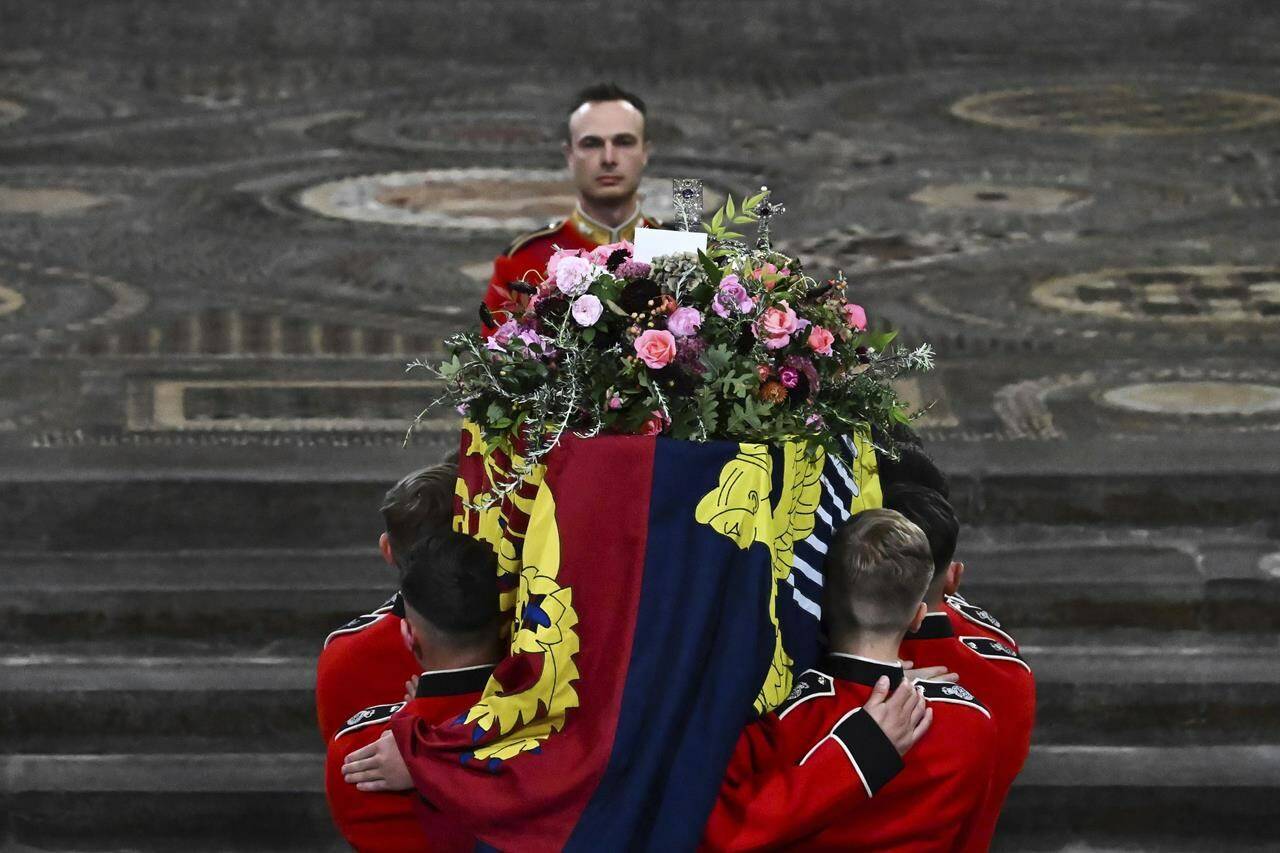I couldn’t see the lone piper. But it didn’t matter.
As the sounds of the Scottish lament, “Sleep, Dearie, Sleep,” faded into the silence of Westminster Abbey, it finally struck me that Queen Elizabeth II was really gone.
The queen loved bagpipes so much that she had a piper play under her window for 15 minutes every morning, so those notes disappearing into the ether had a sense of finality, in a grand, show-stopping way.
Monday’s state funeral was filled with those kinds of moments as Britain said good-bye to its longest-serving monarch with all the pageantry the nation is known for.
The black-clad mourners included the royal family, seven British prime ministers and hundreds of dignitaries from around the world, including U.S. President Joe Biden.
But it was the colors that caught my eye.
The dark clothing was just a backdrop for decorations of all kinds. Military medals gleamed from the chests of old soldiers, and civilians sported ribbons denoting civilian honors bestowed by the queen.
There were Knights of the Garter in blue velvet capes. Trumpeters with long silver instruments festooned with banners. Soldiers in gleaming plumed-helmets and the army veterans known as Chelsea Pensioners, resplendent in their traditional scarlet tunics.
“It was like something out of a fairy tale,” said Bertram Leon, who was recently awarded a British Empire Medal for service to the St. Lucian community. “You know, it was amazing, beautifully well done — orchestrated, which is what you expected.”
I witnessed the spectacle from a seat in the abbey’s north transept, my view obstructed by a great stone pillar. That’s partly why I couldn’t see the piper.
But so what? It didn’t matter. It was enough to be part of the crowd.
Watching the world leaders file in, I wished I had a scorecard with little photographs to figure out who was who. There were so many of them — who could keep track?
Then came the royals, led by King Charles III in full military uniform, a sword on his hip.
But behind the pomp and circumstance, this was about honoring the late queen and her lifetime of service to Britain and the Commonwealth.
And it was the Archbishop of Canterbury, Justin Welby, who captured that better than any parade or procession.
Welby reminded the congregation of the queen’s speech during the early days of the COVID-19 pandemic — when frightened Britons were stuck in their homes unable to see friends and family.
Elizabeth, a symbol of stability for 70 years, echoed the words of a World War II-era song by Vera Lynn — and assured the nation that “We will meet again.”
Welby’s words reminded me of the night I listened to that speech, and wondered what the future would hold. I was frightened too — wasn’t everyone?
So somehow this immense state funeral service suddenly became very personal. Amid all the pomp and pageantry, we were all invited to think about that night— about what the queen meant to us in that awful, pandemic time.
So whatever it was, the words or the guardsmen or the choristers, I can tell you one thing: At the end of the service, the congregation stood and sang “God Save the King’’ with such gusto that it almost felt as if the abbey walls were shaking. If nothing else, the nation’s long-time leader was leaving center stage.
I can’t say for sure, of course. But I think it will take this country some time to remember that the first line of the national anthem is no longer “God Save our gracious Queen.’’
—Danica Kirka, The Associated Press
RELATED: Victoria procession, ceremony, as B.C. pays tribute to Queen Elizabeth II

